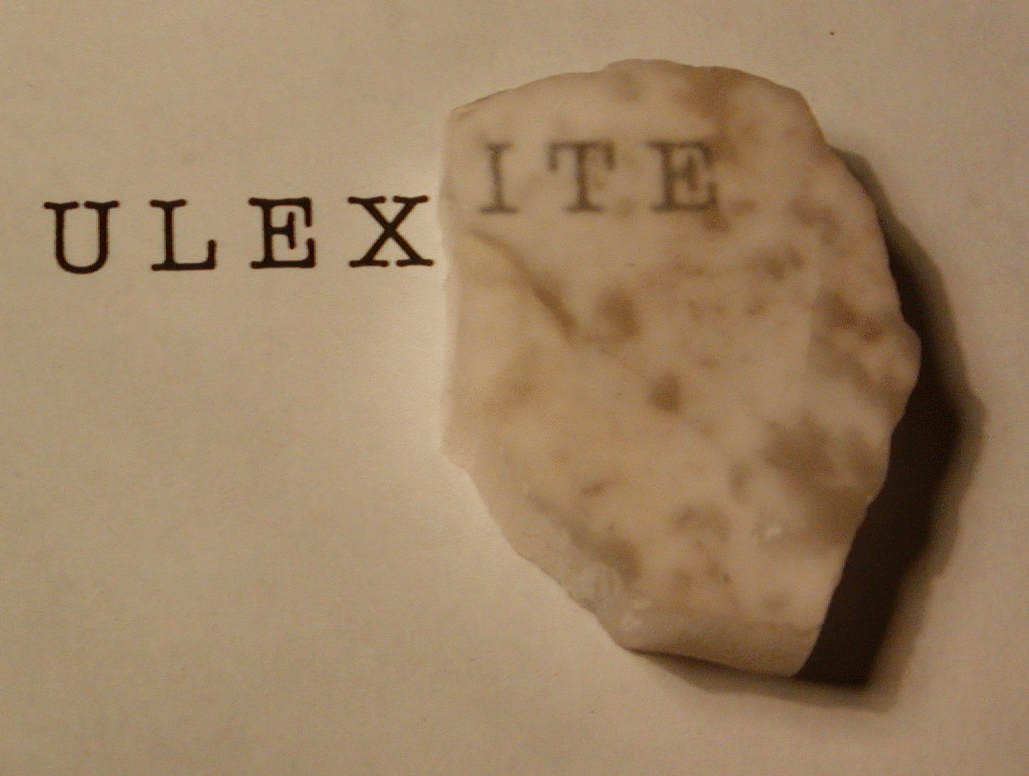 Figure 1: ulexite displaying its fiber optic properties.
Figure 1: ulexite displaying its fiber optic properties.
Peter Russell
Department of Earth Sciences
University of Waterloo
Waterloo, Ontario N2L 3G1
Canada
Will the real television stone please stand up?
Ulexite (NaCaB5O6(OH)6 . 5 H2O) is a borate mineral famous for its unusual optical properties; it's named for its discoverer, the German chemist G. L. Ulex. When a slab of this white fibrous mineral is polished on both sides and placed on a sheet of newspaper, the words seem to ``leap'' to the top of the stone --- hence the nickname, television stone. See Figure 1. Ulexite can be found in several locations, of which Boron, California is probably the most famous.
 Figure 1: ulexite displaying its fiber optic properties.
Figure 1: ulexite displaying its fiber optic properties.
What accounts for this unusual effect? The answer is that ulexite is a natural fiber optic material. Its parallel fibers exhibit total internal reflection, guiding light along the length of the fibers. As Jeff Hecht explains in his book City of Light: The Story of Fiber Optics (Oxford University Press, 1999), "Although ulexite was discovered around 1850, nobody took a close look at its optical properties until roughly a century later. It inspired no fiber-optic pioneers; some had never heard of it until I mentioned it. Only in 1963, several years after the faceplate was invented, did Bob Potter recognize ulexite as a natural fiber bundle."
Another neat property of ulexite was discussed by G. Donald Garlick and W. Barclay Kamb in the 1991 issue of the Journal of Geological Education. If you hold a polished slice right up to your eye, and look at a point source of light, you see concentric circles of light. This effect can also be produced by shining a laser pointer at a slightly oblique angle through a piece of ulexite. See Figure 2. They explained this behavior as a consequence of different refractive indices in different directions of polarization.
 Figure 2: the concentric circles formed by shining a laser through
ulexite.
Figure 2: the concentric circles formed by shining a laser through
ulexite.
Ulexite delights children and is a fixture at gem and mineral shows, where small polished pieces can be had for as little as ten cents a gram.
But lately we've begun seeing some new material being offered as ulexite. We've seen it for sale on ebay, and at several gem and mineral shows; apparently it comes from Morocco. Like ulexite, it's a white fibrous mineral with low hardness and low density. It even exhibits some of the same optical properties --- but it's not ulexite. Figure 3 illustrates this material.
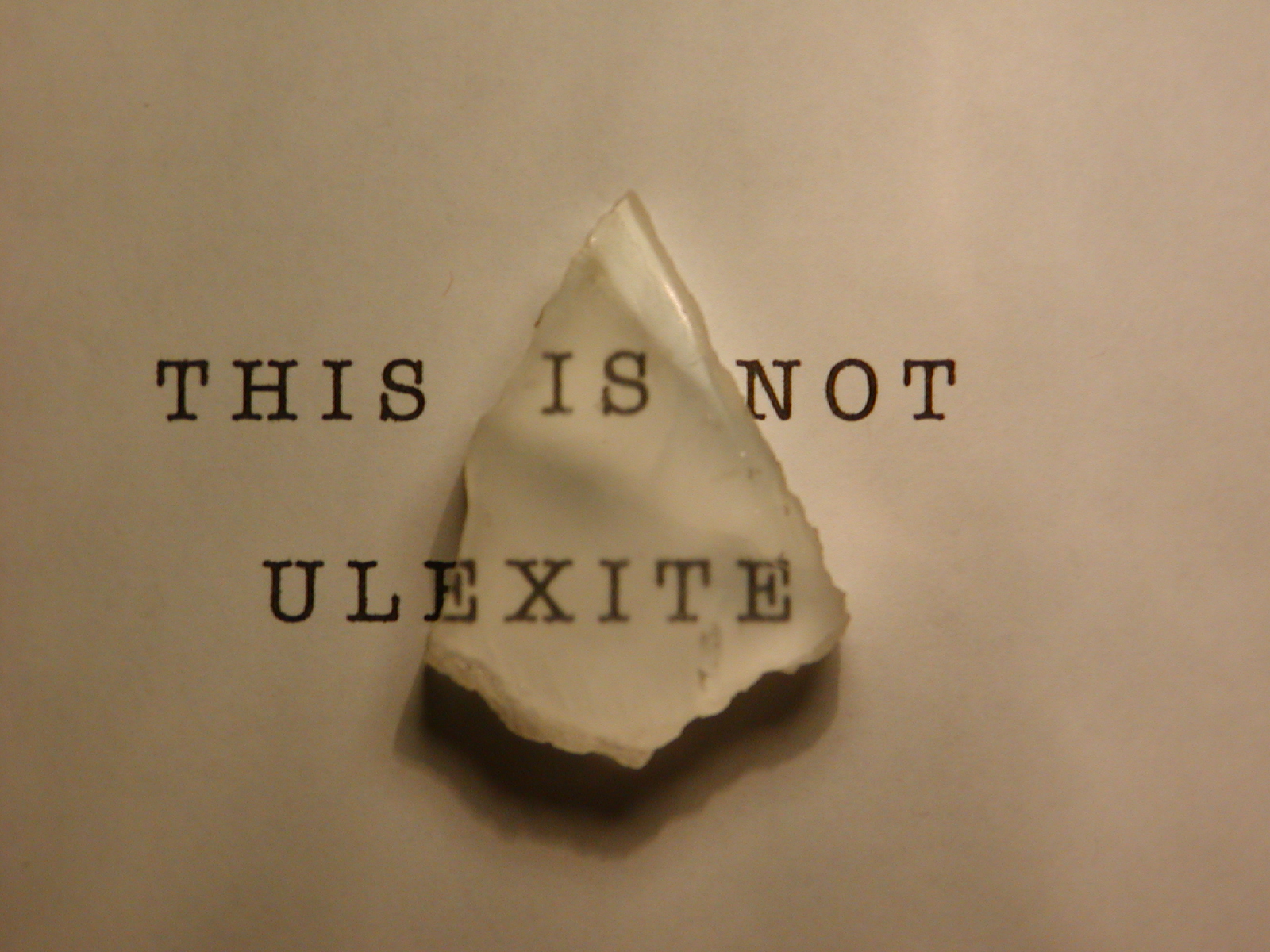 Figure 3: this is not ulexite!
Figure 3: this is not ulexite!
What is it? It's a variety of gypsum, sometimes called satin spar (CaSO4 . 2 H2O).
Here's how to tell them apart. Both minerals are very light, but ulexite is somewhat less dense; reference works give a specific gravity ranging from 1.6 to 1.96. Gypsum is heavier, with a specific gravity ranging from 2.2 to 2.32. With the aid of Lew Brubacher and Mike Chong of the Department of Chemistry at the University of Waterloo, we took a picture of ulexite floating and gypsum sinking in a beaker of liquid of specific gravity 2.1 (created by mixing bromoform and methylene chloride).
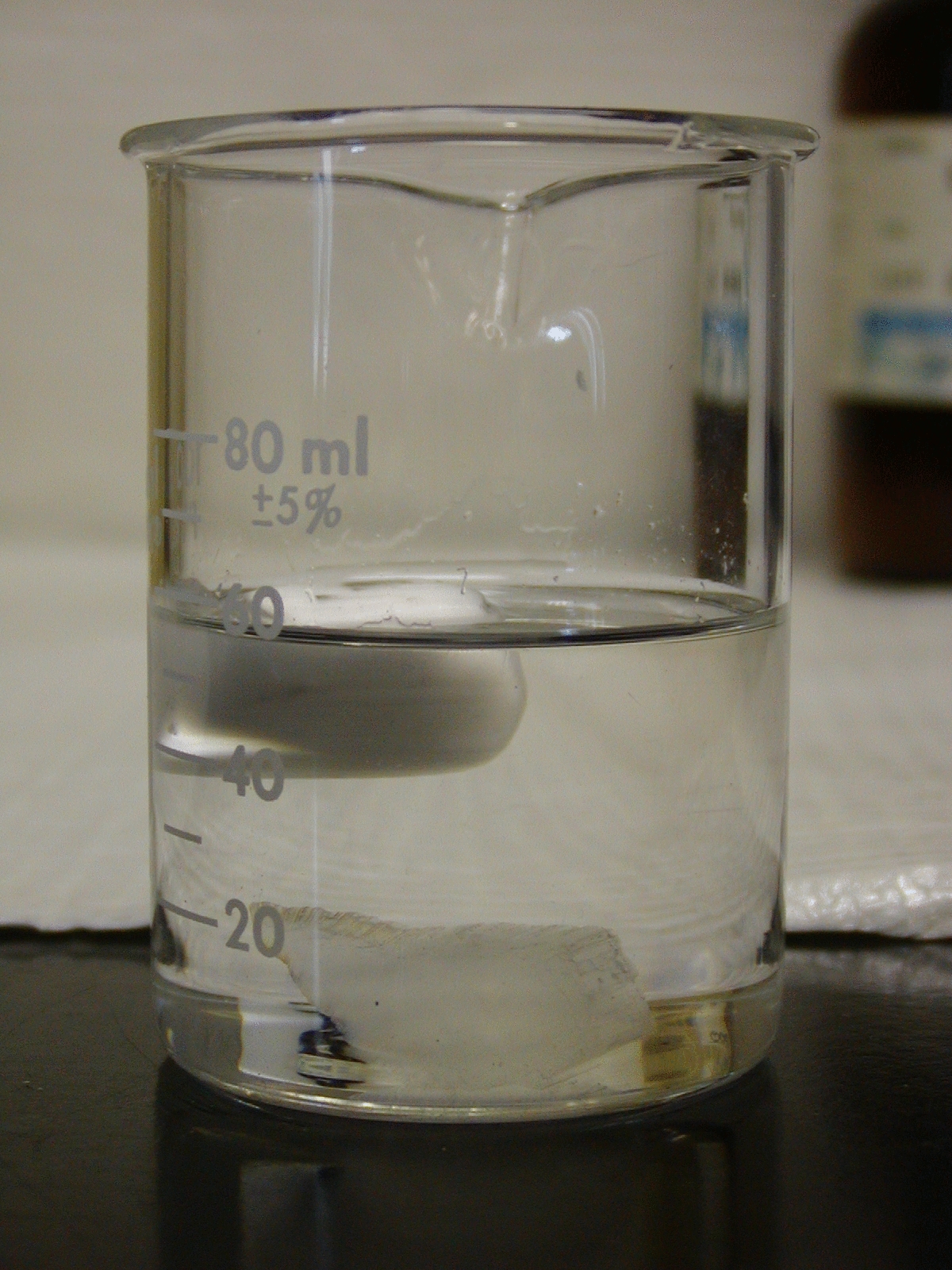 Figure 4: ulexite
floating and gypsum sinking in a liquid of specific gravity 2.1
Figure 4: ulexite
floating and gypsum sinking in a liquid of specific gravity 2.1
Ulexite often tends to have white and black inclusions that make it not totally transparent, while satin spar gypsum is often nearly crystal clear. By holding the specimens up to a light, you can easily see the difference. Also, satin spar gypsum is more prone to internal cracks. See Figure 5.
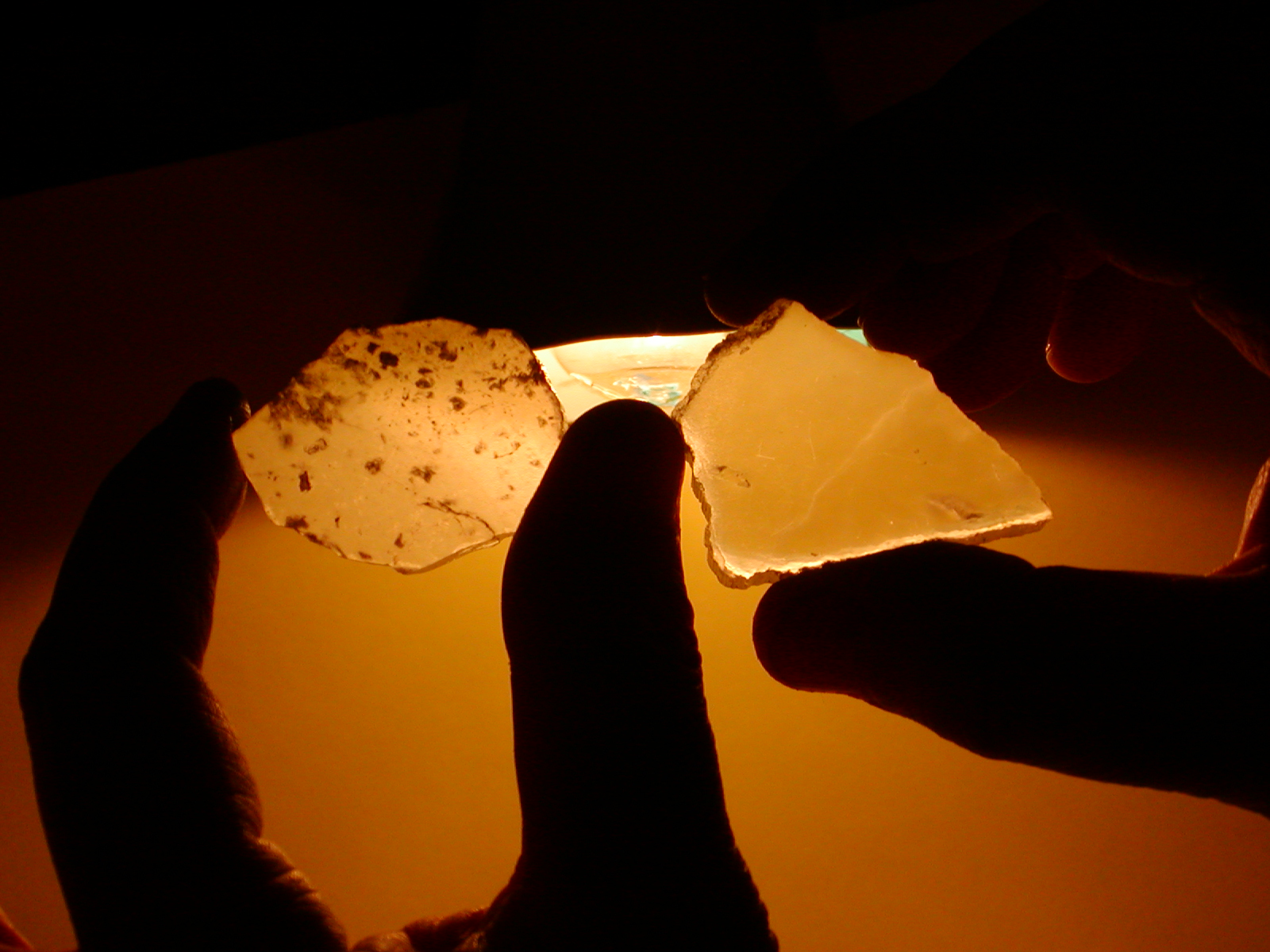
Figure 5: ulexite (left) showing typical inclusions; satin spar gypsum (right) showing typical crack.
But the difference in the fiber optic properties is the easiest test. The image on the top of a polished piece of ulexite is clear even if you don't look at it exactly straight on. If you place a piece on newsprint, you can still read the letters underneath even up to 30o angles. That's not the case with satin spar gypsum. The image becomes blurred at angles as small as 10o and is completely unreadable at 20o. See Figure 6.
(Another form of gypsum, sometimes called selenite, consists of crystals that can be clear as glass. These do not exhibit the same unusual optical properties.)
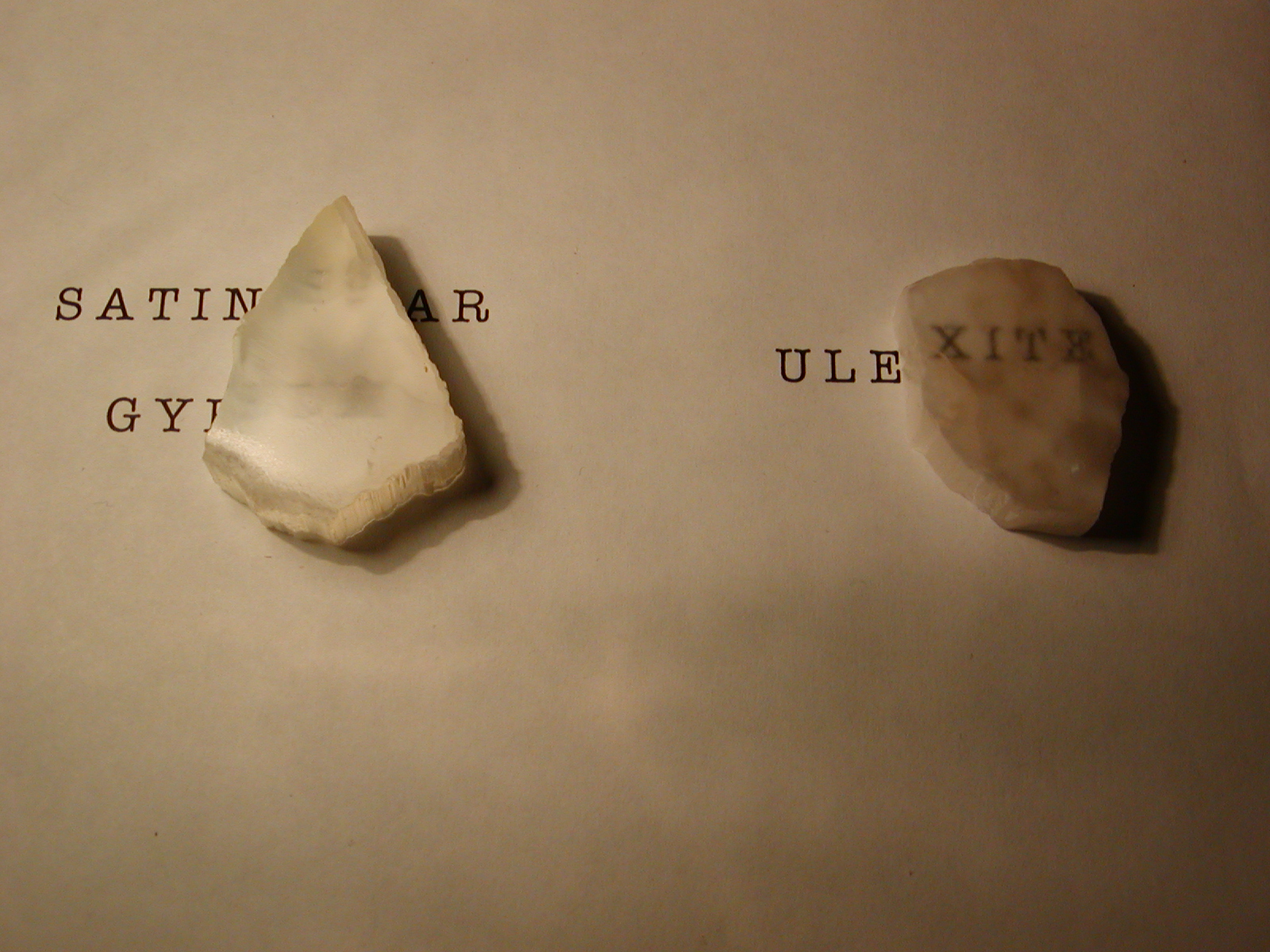
Figure 6: satin spar gypsum (left) and ulexite (right) viewed at a 20o angle.
The following table summarizes the differences between ulexite and satin spar gypsum.
| Ulexite | Satin Spar Gypsum |
|
print underneath is visible at angles up to 30o |
print underneath gets blurry at even slight angles |
| very low specific gravity (1.95) | not quite so low specific gravity (2.2) |
| small whitish, brownish, blackish inclusions | clearer, but sometimes has cracks |
|
view through side of 1" specimen is mostly opaque |
view through side of 1" specimen is translucent |
Whether you're a dealer selling these interesting minerals, or a rockhound looking to add them to your collection, don't mistake ulexite for gypsum!